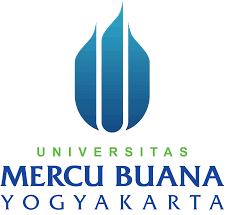Substitution of Local Workers by Foreign Workers: A Threat to Job Availability in Indonesia
DOI:
https://doi.org/10.55927/ijabm.v4i4.459Keywords:
Foreign Labor, Local Labor Substitution, Employment, Morowali, industry, SEMAbstract
The increasing presence of foreign workers (TKA) in Indonesian industrial areas has raised concerns about the marginalization of local workers in the domestic labor market. This study aims to analyze the influence of TKA dominance on job availability for local workers, focusing on the Morowali Industrial Estate, Central Sulawesi. This study uses a quantitative approach with the Structural Equation Modeling (SEM) method to examine the relationship between TKA dominance, local labor substitution, and job availability. Data were obtained through a survey of 100 local workers who work or live around the industrial area. The results show that TKA dominance has a significant effect on decreasing job availability, both directly and through the mediation of local labor substitution. This finding confirms that employment policies that are less favorable to local workers can widen the gap in job opportunities, especially in industrial areas with high foreign investment. Therefore, affirmative strategies and strict policies regarding the recruitment of TKA are needed to prevent their presence from causing a substitution effect that is detrimental to local workers
References
Amin, M., & Rahardjo, A. (2021). Analysis of local and foreign labor needs in industrial areas. Indonesian Journal of Economics and Development, 22(1), 15–28. https://doi.org/10.21002/jepi.v22i1.12345
Bailey, T., & Van Reenen, J. (2020). Foreign labor and employment displacement: A review of current empirical evidence. Labor Economics, 65, 101847. https://doi.org/10.1016/j.labeco.2020.101847
Effendi, A., & Fauzi, H. (2020). Substitution of local labor by foreign workers: A case study of the Morowali industrial area. Journal of Social and Political Sciences, 24(2), 107–120. https://doi.org/10.22146/jisp.2020.123456
Fitriani, R., & Widodo, T. (2021). The Impact of Foreign Workers on Employment Opportunities in Indonesia. Journal of Economics and Development Studies, 22(3), 245–258. https://doi.org/10.17977/um002v22i3p245
Muhammad, R., & Azzahra, S. (2022). Local Workforce Adaptation Strategies to Industrial Globalization. Journal of Sociology of Labor, 10(1), 77–89. https://doi.org/10.1016/j.jsoket.2022.0005
Nugraha, P., & Hartati, L. (2020). Local Workforce Skills Gap and Preference for Foreign Workers. Journal of Economics and Employment, 15(3), 131–143. https://doi.org/10.21107/jek.v15i3.2020.131
Putra, D. R., & Lestari, W. (2022). Analysis of the impact of foreign workers on domestic employment in Indonesia. Indonesian Journal of Development Economics, 30(2), 199–212. https://doi.org/10.20473/jepi.v30i2.2022.199-212
Saraswati, L., & Nugroho, Y. (2023). Industry preferences for foreign workers in the digitalization era. Journal of Critical Economics, 18(2), 190–205. https://doi.org/10.20473/jekrit.v18i2.2023
Siregar, H., & Mulyani, S. (2021). Foreign Worker Placement Policy and Its Implications for the Local Workforce. Journal of Public Administration, 18(1), 55–68. https://doi.org/10.25077/jap.18.1.55-68.2021
Wijaya, A., & Ramadhan, I. (2023). The Effect of Foreign Investment on Local Labor Absorption in Industrial Estates. Journal of Applied Economics, 8(1), 88–101. https://doi.org/10.23917/jiet.v8i1.2023.88
Yusuf, M. A., & Anwar, M. (2023). Globalization and Inequality of Employment Opportunities: An Empirical Study in Indonesian Industrial Estates. Indonesian Journal of Economics and Business, 38(1), 33–45. https://doi.org/10.22146/jebi.2023.39891






















